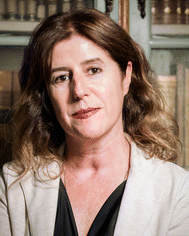Vanadium Chemistry in the 21st Century
Armando J. L.
Pombeiro
 a,
Manas
Sutradhar
a,
Manas
Sutradhar
 ab and
Isabel
Correia
ab and
Isabel
Correia
 *a
*a
aCentro de Química Estrutural, Instituto Superior Técnico, Universidade de Lisboa, Av. Rovisco Pais, 1049-001 Lisboa, Portugal. E-mail: pombeiro@tecnico.ulisboa.pt; manas@tecnico.ulisboa.pt; icorreia@tecnico.ulisboa.pt
bBioRG, Faculdade de Engenharia, Universidade Lusófona – Centro Universitário de Lisboa, Campo Grande 376, Lisboa 1749-024, Portugal. E-mail: manas.sutradhar@ulusofona.pt
 Armando J. L. Pombeiro |
 Manas Sutradhar |
 Isabel Correia |
The 13th International Vanadium Symposium, V13, was held from 22 to 24 November 2023 in Lisbon, Portugal, chaired by Isabel Correia. V13 followed previous successful vanadium symposia held at Cancun, Mexico (1997); Berlin, Germany (1999); Osaka, Japan (2001); Szeged, Hungary (2004); San Francisco, USA (2006); Lisbon, Portugal (2008); Toyama, Japan (2010); Arlington, USA (2012); Padua, Italy (2014); Taipei, Taiwan (2016); Montevideo, Uruguay (2018) and Limassol, Cyprus (2021, virtual edition).
This interdisciplinary event gathered researchers from the vanadium research community to showcase their latest findings on topics within coordination chemistry, bioinorganic chemistry, medicinal chemistry, catalysis, toxicology, environmental and materials sciences, among other relevant ones.
The current web collection “Vanadium Chemistry in the 21st Century” highlights the vibrancy of the field and emerges from work presented at the 13th International Vanadium Symposium, as well as other contributions from the scientific community.
Research on new vanadium compounds and new advances in its bioinorganic chemistry highlight the increasing relevance of this metal ion in medicinal chemistry and give insight on its beneficial health effects. Enrique J Baran writes a perspective article that discusses the role of L-ascorbic acid in vanadium metabolism, biochemistry and detoxification (https://doi.org/10.1039/D4NJ00832D).
Patricia A. M. Williams et al. continue their work on the anticancer potential of vanadium flavonoids, reporting on a ternary complex containing naringenin and 1-10-phenanthroline (phen), that revealed improvements in both antioxidant and anticancer effects upon inclusion of phen, when compared to the 1![[thin space (1/6-em)]](https://www.rsc.org/images/entities/char_2009.gif) :
:![[thin space (1/6-em)]](https://www.rsc.org/images/entities/char_2009.gif) 2 naringenin binary complex (https://doi.org/10.1039/D4NJ00655K). Debbie C. Crans, Peter A. Lay et al. report on a series of non-innocent halogen substituted Schiff base vanadium catecholates and evaluate the impact of electronic effects on the biological properties of the compounds, stressing the importance of hydrolytic stability for the anti-proliferative activity (https://doi.org/10.1039/D4NJ01223B). Davi Fernando Back, Hernán Terenzi et al. developed new zwitterionic vanadium(V) imine complexes with a fluorinated triphenylphosphonium group that were investigated for their interactions with proteins and DNA and their ability to cleave DNA (https://doi.org/10.1039/D4NJ03087G). Matthew J. Harrington et al. conducted a cross-disciplinary investigation into the use of vanadium by mussels for the formation and function of the byssus. The findings demonstrate that Mytilus mussels actively absorb vanadium with the specific purpose of incorporating it into the byssus (https://doi.org/10.1039/D4NJ02546F).
2 naringenin binary complex (https://doi.org/10.1039/D4NJ00655K). Debbie C. Crans, Peter A. Lay et al. report on a series of non-innocent halogen substituted Schiff base vanadium catecholates and evaluate the impact of electronic effects on the biological properties of the compounds, stressing the importance of hydrolytic stability for the anti-proliferative activity (https://doi.org/10.1039/D4NJ01223B). Davi Fernando Back, Hernán Terenzi et al. developed new zwitterionic vanadium(V) imine complexes with a fluorinated triphenylphosphonium group that were investigated for their interactions with proteins and DNA and their ability to cleave DNA (https://doi.org/10.1039/D4NJ03087G). Matthew J. Harrington et al. conducted a cross-disciplinary investigation into the use of vanadium by mussels for the formation and function of the byssus. The findings demonstrate that Mytilus mussels actively absorb vanadium with the specific purpose of incorporating it into the byssus (https://doi.org/10.1039/D4NJ02546F).
In the catalysis field several works underline the importance of vanadium. Kotohiro Nomura, Michael R. Buchmeiser et al. report V(V) arylimido alkylidene N-heterocyclic carbene complexes in the ring opening metathesis polymerisation of norbornene, affording ring-opened polymers not only with very high cis-selectivity, but also with exclusive syndiotactic stereo-regularity (https://doi.org/10.1039/D4NJ02537G).
In the field of heterogeneous catalysis Tumula Venkateshwar Rao et al. explore mesoporous ceria-supported vanadium oxide catalysts in the aerobic oxidation of ethylbenzene to acetophenone without the involvement of any solvent or additive, achieving high ethylbenzene conversion and excellent acetophenone selectivity (https://doi.org/10.1039/D4NJ00529E). Putrakumar Balla, V. R. Chary Komandur et al. developed niobia supported VPO catalysts for the dehydration of glycerol, extensively characterizing the heterogeneous biocatalyst (https://doi.org/10.1039/D4NJ02063D).
José Ferraz-Caetano, M. Natália D. S. Cordeiro et al. provide a communication on an emerging field with a novel approach to set up a machine learning-ready database for epoxidation reactions, focusing on vanadium catalysts, and providing insights for catalyst design and reaction optimisation (https://doi.org/10.1039/D3NJ05784D).
In the field of materials science, Kaushal Kumar et al. develop new NIR activated Er3+/Yb3+ doped YVO4 and GdVO4 phosphors, with upconversion and photoacoustic properties for photothermal conversion applications (https://doi.org/10.1039/D4NJ02530J). Arockia Selvi J et al. underline the potential of iron vanadate nano-bulbs in the development of efficient and sensitive electrochemical sensors for levofloxacin monitoring, which could prove to be a valuable tool for real-time toxicity analysis (https://doi.org/10.1039/D4NJ02548B).
Polyoxovanadates are gaining momentum and several works report on these. A large tridecanuclear cobalt containing polyoxovanadate, [Co13(OH)6(OCH3)6V24O72]10− is reported by Yuji Kikukawa, Yoshihito Hayashi et al. showing potential as a catalyst for the oxidation of aromatic and aliphatic alcohols (https://doi.org/10.1039/D4NJ02900C). Giovana G. Nunes et al. explore the interaction of decavanadate with cationic organic dyes, such as methylene blue and rhodamine B, highlighting the potential of POMs in environmental applications such as the bleaching of dye solutions (https://doi.org/10.1039/D4NJ02454K).
The rich coordination chemistry of vanadium is explored in the paper by Themistoklis A. Kabanos, Anastasios D. Keramidas et al. that developed a new luminescent carbazole covalent adduct with a hydroxylamino-1,3,5-triazine chelating group that was able to coordinate several metal ions, including V(V), and could be used for their quantification in nM concentrations (https://doi.org/10.1039/D4NJ02645D).
Hence, this web collection represents modern areas of research on diverse topics reflecting the interdisciplinarity and versatility of vanadium, namely under applied perspectives.
We thank the authors for their valuable contributions which we hope the readers will consider inspiring and stimulating.
| This journal is © The Royal Society of Chemistry and the Centre National de la Recherche Scientifique 2024 |
